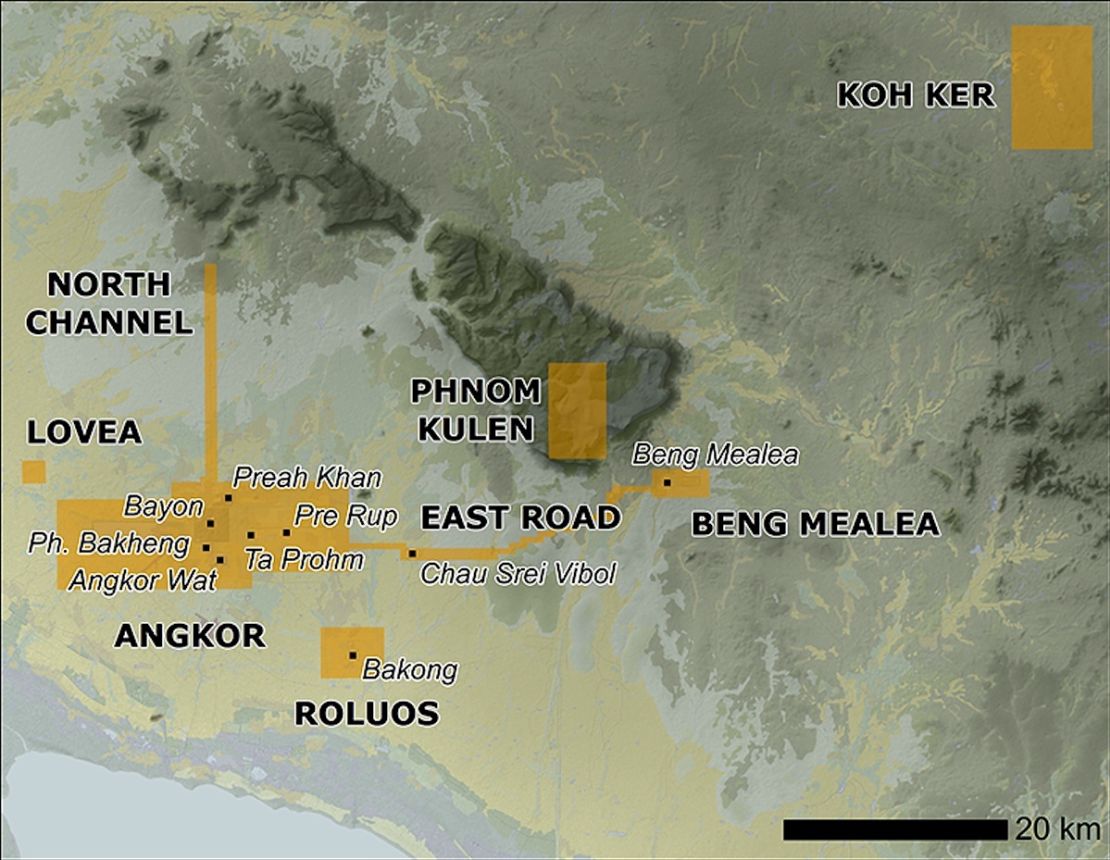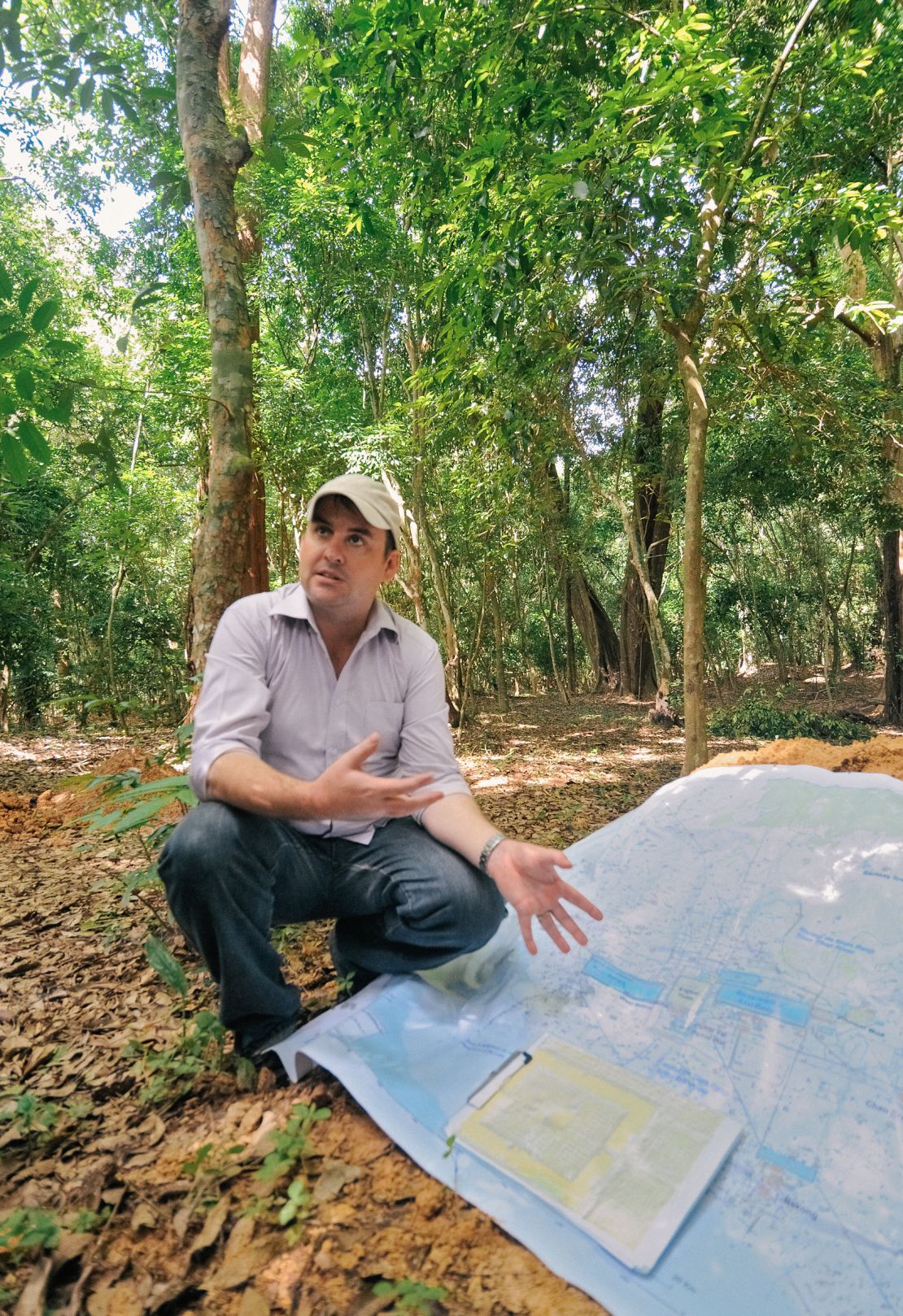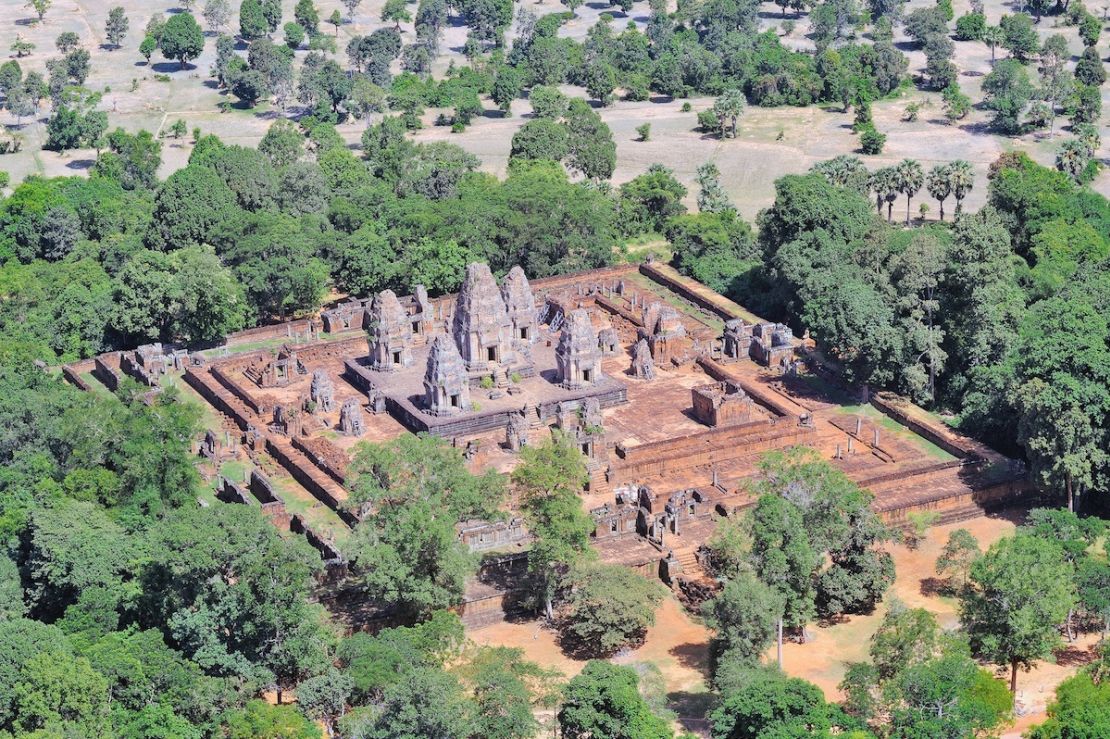Story highlights
A helicopter camera has changed the way travelers will experience Angkor Wat and other Khmer temple-cities
Consortium of archaeologists brought together to fill in the blank spaces on map of Angkor
Locals hope discovery will inspire travelers to explore Siem Reap's lesser known Khmer ruins
Visit Cambodia’s number one tourist attraction, Angkor Wat, with the average tour guide and you’ll probably leave the UNESCO World Heritage Site with your head swimming in dates, dimensions and unpronounceable names of kings.
Jaya-who?
You might also get the impression, as I did when I first visited two years ago, that the magnificent temple complex you scrambled around in sweltering heat is confined within its sturdy walls and scenic moat, and the city ended there.
Turns out that’s not the case.
A new report released by the U.S.-based National Academy of Sciences (NAS) highlighting the results of an April 2012 airborne laser survey – the first of its kind in Asia, covering 370 square kilometers of northwest Cambodia’s Khmer Empire archaeological sites – has revealed a much grander Angkor landscape, one without parallel in the pre-industrial world.
Even more sensational, the June announcement of the findings confirmed the existence of a huge medieval city buried beneath impenetrable jungle on a remote mountain.
Re-writing Cambodia’s history books
Angkor was the capital of the Khmer Empire, which was founded in 802 AD on Mount Kulen when Jayavarman II was declared universal monarch.
These days the most popular Angkor sites for tourists are Angkor Thom, which is home to Bayon and its massive carved smiling faces; magnificent Angkor Wat; and smaller temples such as Ta Prohm, Preah Khan, Pre Rup and Ta Nei.

But the precise data gathered by LiDAR, a remote sensing laser instrument, reveals that Angkor was actually a monumental, formally planned and low-density mega-city.
Less visited ruins further afield, such as enchanting Beng Mealea, 52 kilometers from Siem Reap and sprawling Koh Ker, some 120 kilometers away, were actually satellite cities within Angkor’s colossal urban network.
Phnom Kulen, or Mount Kulen, meanwhile, 48 kilometers north of Siem Reap, has been identified as the location of the medieval city of Mahendraparvata, or the Mountain of Indra – King of the Gods.
This makes Angkor the world’s largest urban conurbation prior to Britain’s 18th-century Industrial Revolution – a revelation that completely alters how experts are looking at the area.
While the ancient urban network’s existence was mentioned in inscriptions and long suspected by French archaeologists working in Cambodia, it couldn’t be confirmed due to the remoteness of ruins already discovered on the plateau, the inaccessibility of much of the mountain and the existence of landmines installed by the Khmer Rouge.

One of the authors of the NAS report, Australian archaeologist Dr. Damian Evans, is director of the University of Sydney’s Robert Christie Research Centre in Siem Reap and the chief architect behind the costly LiDAR mission.
He brought together eight different archaeological organizations, including the Cambodian government’s APSARA Authority, which manages the region’s archaeological sites, to form the Khmer Archeology LiDAR Consortium, which raised funds for the project and shared data.
The LiDAR mission was conceived to fill in the blank spaces on the map of Angkor, Evans says, as we slip into the jungle just outside the walls of Angkor Wat.
“Nothing on the forest floor is random, not even a termite mound,” Evans explains as he points out anthills.
“While a lot of the city is buried beneath the ground, it impacts the surface in subtle ways. The movements, activities and actions of these people hundreds of years ago remain inscribed into the landscape.
“None of these lumps and bumps and dips made any kind of sense, but once you see the LiDAR imagery, it’s strikingly evident that what you’re looking at are the remains of a city associated with Angkor Wat.”
Using technology to speed things up
Out of the sight of the one million tourists who visit the temple-city every year, archaeologists are at work on excavation projects.
They use found remnants of the region’s rich Khmer history, culture and way of life to piece together a story that’s continually developing, changing visitors’ understanding and experience of Angkor in the process.
Archaeologists have worked on the ground here since naturalist Henri Mouhot stumbled upon Angkor Wat in 1860, excavating temple ruins deep within jungles for visitors to tour, peeling away vines from palaces for us to explore and unearthing riches to be displayed in museums.
For many archaeologists, a discovery can represent a lifetime’s work. The LiDAR technology changes all that, speeding up the process.
“What LiDAR takes away is a little of the Indiana Jones stuff of whacking through cactus, spiders, thorny trees and mud puddles,” says American archaeologist Dr. Miriam Stark, onsite in Siem Reap.
“You can still have your spiders, snakes and bugs, and all those rich experiences, but now you know you’re getting somewhere, which is a lot more satisfying.”
A taste of that Indiana Jones stuff awaits our party at 492-meter-high Mount Kulen, a 90-minute drive from Siem Reap.
Near Preah Ang Thom, home to a colossal 16th-century reclining Buddha carved out of solid rock, my photographer husband and I swap our four-wheel-drive vehicle for motorbikes, riding behind local guides for a daylong bone-rattling exploration of the eight-kilometer-wide and 32-kilometer-long mountain plateau.
We cling on tight as our guides, familiar with every cave and cranny on the landmine-riddled mountain, tackle muddy trails up hills, bump over log bridges, fly through fast-flowing streams, get stuck in sludgy puddles and go off-road, bouncing along jungle tracks only they can see, every now and again alighting to slash away vines and branches with a scythe to create our own paths.
We hike to see enormous carved stone statues of an elephant and lions at Sras Damrei (Elephant Pond) buried deep within the forest and scramble about the ruins of Prasat Rong Chen, the three-tiered laterite temple where the Brahman priest made Jayavarman II a god-king.
We emerge from thick jungle to gaze at the red brick temple of O Paong, grass and trees sprouting from its cracks.

Another day we visit beautiful Beng Mealea, taken captive by tangled roots and a forest that grows within and around the moss-covered temple, and the remote, sprawling Koh Ker, where temple after crumbling temple wait to be explored.
We see a total of four tourists the whole day.
Insider Guide: Best of Cambodia
“Digging” for ruins in the air
We also board the helicopter that was equipped with the LiDAR instrument to view the area’s splendid temple-cities and grasp the size of the colossal new cityscape that’s been recently uncovered.
From the air it’s easier to understand how challenging the archaeologists’ job must have been before the device bombarded the ground with laser beams – a million pulses every four seconds – to record data that ultimately provided the precise information that has forever changed how archaeologists work.
At a traditional Khmer stilted house on Siem Reap’s riverside that serves as the Robert Christie Research Centre, I meet archeology professor Dr. Roland Fletcher, co-director of the Greater Angkor Project.
“I like to explain it like this,” begins Dr. Fletcher.
“When you came here you landed at the airport and thought of yourself as driving to Siem Reap, then driving from Siem Reap to Angkor. But when you were at the airport you were really 15 kilometers inside the Angkor city and Siem Reap is in the suburbs of Angkor … at Angkor Wat you’d be right in the middle of the city and everywhere you turned you would be looking across rice fields and see rows and rows of timber houses with smoke rising from them in the morning and the towers of shrines sticking up through the trees … it must have been an unbelievably beautiful place.”
It’s still a beautiful place – as the one million tourists who visited Siem Reap and its Angkor temple-cities in 2012 would no doubt attest.
And hotel and tour operators are predicting a significant increase in tourist arrivals for 2013.
It could be some time before more of the “lost city” of Mahendraparvata’s sites are excavated and its temples are made more accessible – there’s still much de-mining to do on the plateau, too.
In the meantime, however, locals are hoping the new discoveries inspire more travelers to explore remote sites such as Koh Ker and Beng Mealea, and that the intrepid will hop on the backs of motorbikes at Mount Kulen.
Getting there
Several airlines fly directly to Siem Reap in Cambodia and 30-day tourist visas are available upon arrival for many nationalities for $20. Bring passport photos.
Most visitors employ a local guide or hire a tuk-tuk or bikes to explore the Angkor Archaeological Park (open daily, 5 a.m.-6 p.m.).
An Angkor Pass can be purchased at the entrance gate: one-day $20, three-day $40 and seven-day $60.
ABOUTAsia Travel offers tours of the Angkor cities.
Backyard Travel offers one-day expeditions to Mount Kulen and day trips Koh Ker and Beng Mealea.
HeliStar offers flights over the Angkor cities, including to Mount Kulen and Koh Ker, beginning from $90.
Photos by Terence Carter









